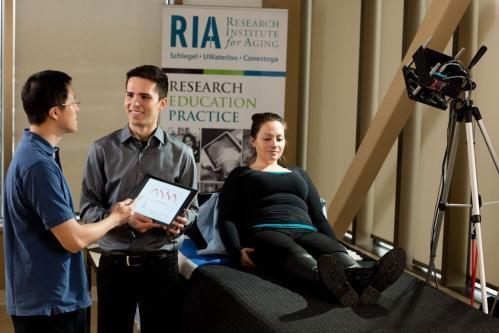
WATERLOO, Ontario, Jan. 8 (UPI) — Researchers have developed a new touchless system that monitors blood flow in the entire body, as opposed to just one point, which they say could help doctors predict or prevent cardiovascular events.
The system, called Coded Hemodynamic Imaging, is portable and monitors several arterial points without contact to skin.
The uses for this, researchers said, range from individual patients who have painful burns or contagious disease to groups of patients in long-term care homes or during mass emergency situations.
Since the 1930s, doctors have used photoplethysmography, or PPG, to monitor cardiovascular activity. PPG uses light to detect fluctuations in local blood volume based on the positioning of sensors on the skin.
Researchers at the University of Waterloo worked with photoplethysmographic imaging, or PPGI, a system more sensitive to changes in active or ambient light, so it does not require contact with the skin.
“Traditional systems in wide use now take one blood pulse reading at one spot on the body,” said Robert Amelard, a doctoral candidate in systems design engineering at the University of Waterloo, in a press release.
“This device acts like many virtual sensors that measure blood flow behavior on various parts of the body. The device relays measurements from all of these pulse points to a computer for continuous monitoring. By way of comparison, think of measuring the traffic flow across an entire city rather than through one intersection.”
For the study, published in the journal Nature, researchers performed two experiments testing whether long-distance monitoring with PPGI was possible.
In the first experiment, a camera and LED light source were separated by 20 centimeters, and participants were asked to position their fingers between the LED and camera. In the second experiment, participants were asked to do the same, except the camera and LED were 1.5 meters apart.
In both the long- and short-distance experiments, researchers reported fundamental heart rate could be identified in all participants, indicating the potential for using the system in both types of situations. The difference in data available from the technology right now, however, is limited.
At the moment, patients with low motion — such as neonatal monitoring or studies on sleep — are most ideal for the new technology.
With improvements to how the device processes light in order to garner more accurate information from patients, the development of methods to prevent physical obstructions from inhibiting measurements, and ways to teach the system to track movement and continue collecting data, researchers said the potential uses for the device are significant.
“Since the device can also scan multiple patients individually at once and from a distance, consider the potential in mass emergency scenarios or long-term care homes,” said Alexander Wong, a professor at the University of Waterloo.
“This technology provides for a more predictive approach to monitor vitals and the potential for its use is extensive, such as indicating arterial blockages that might otherwise go undetected, or warning older adults who risk falling as a result of getting dizzy when they stand.”





